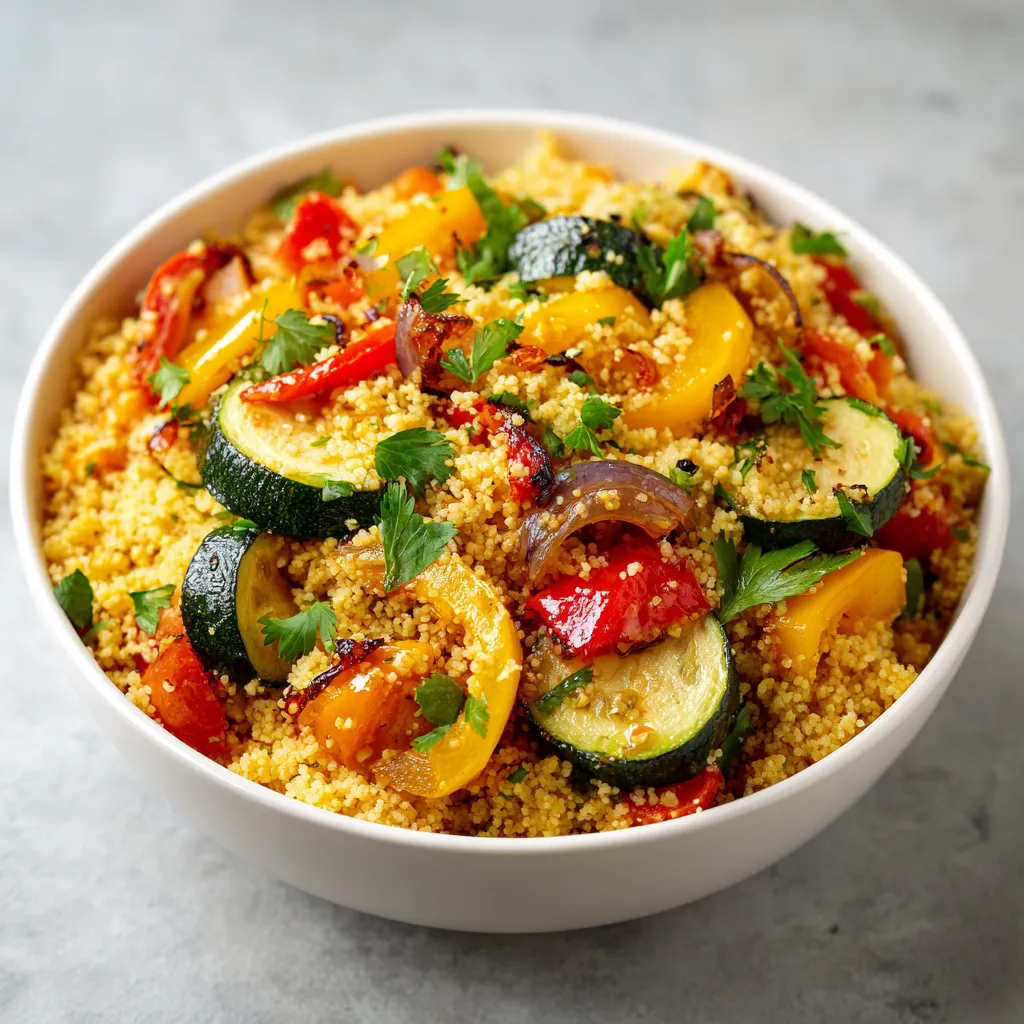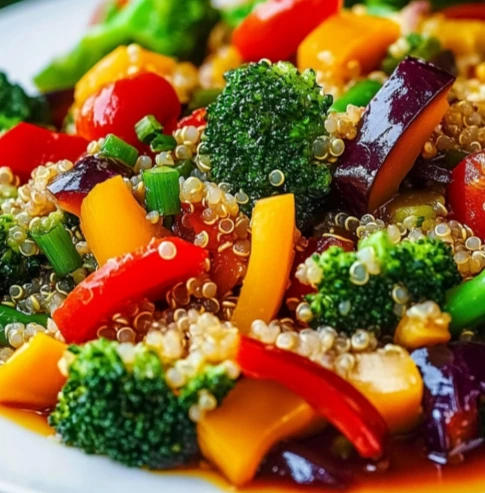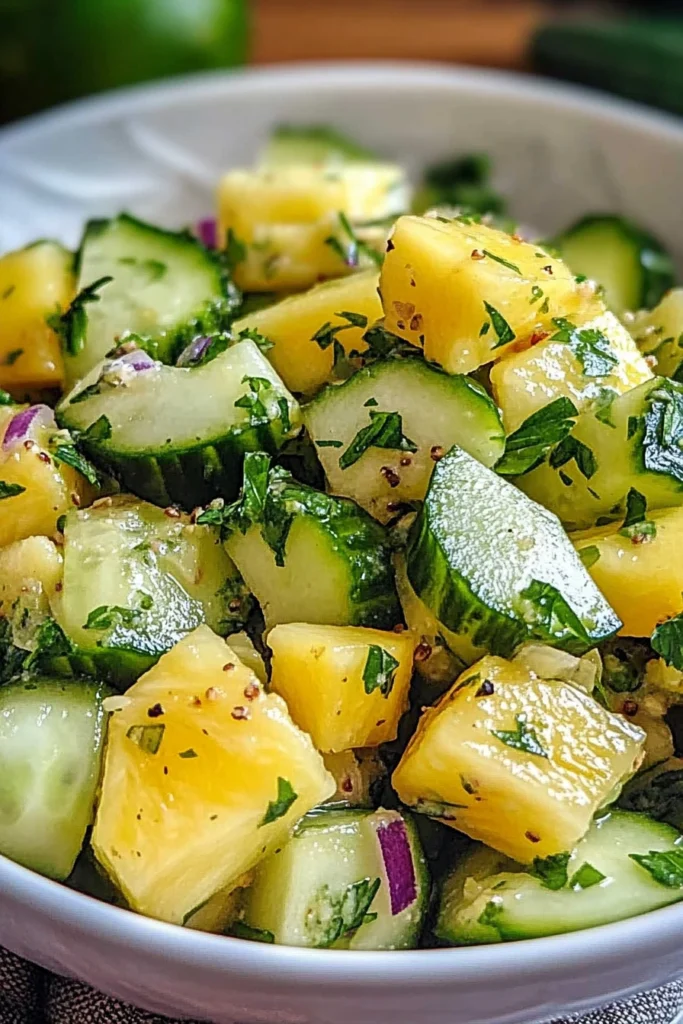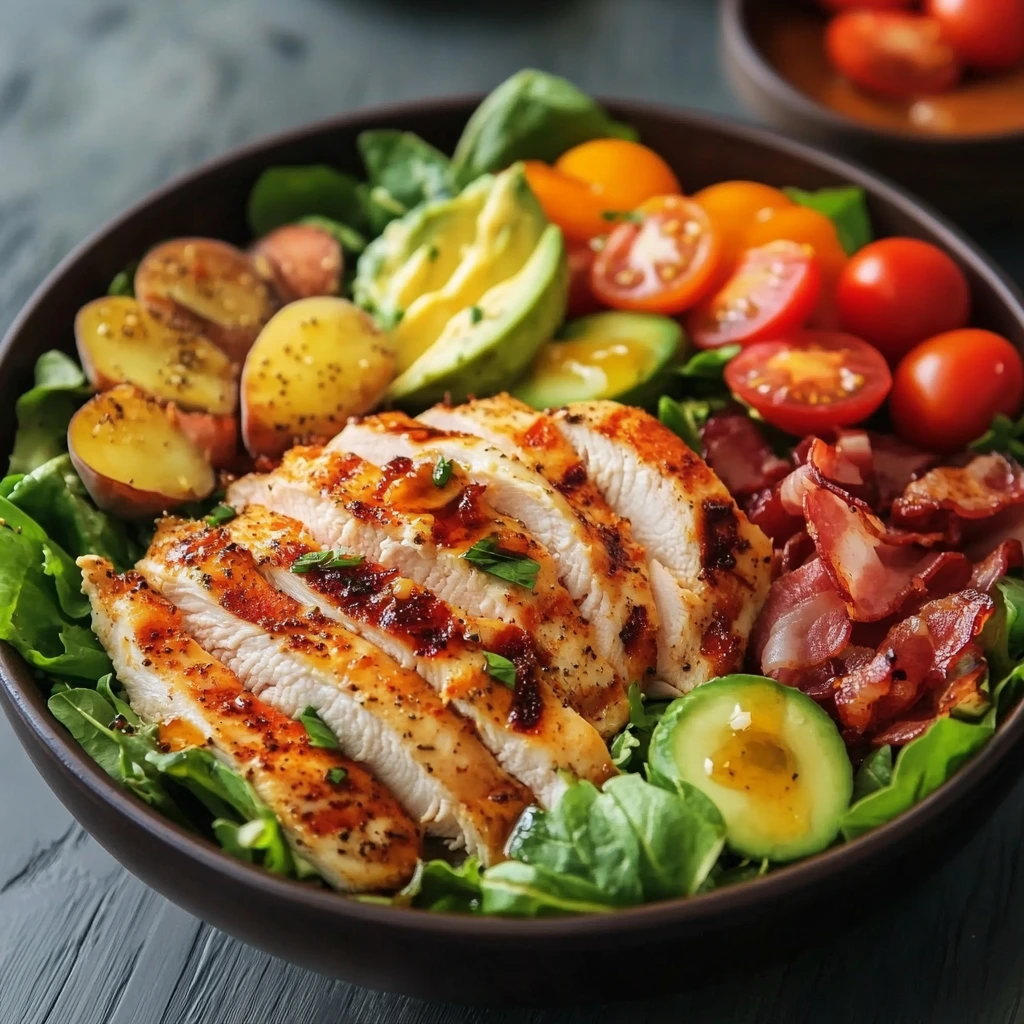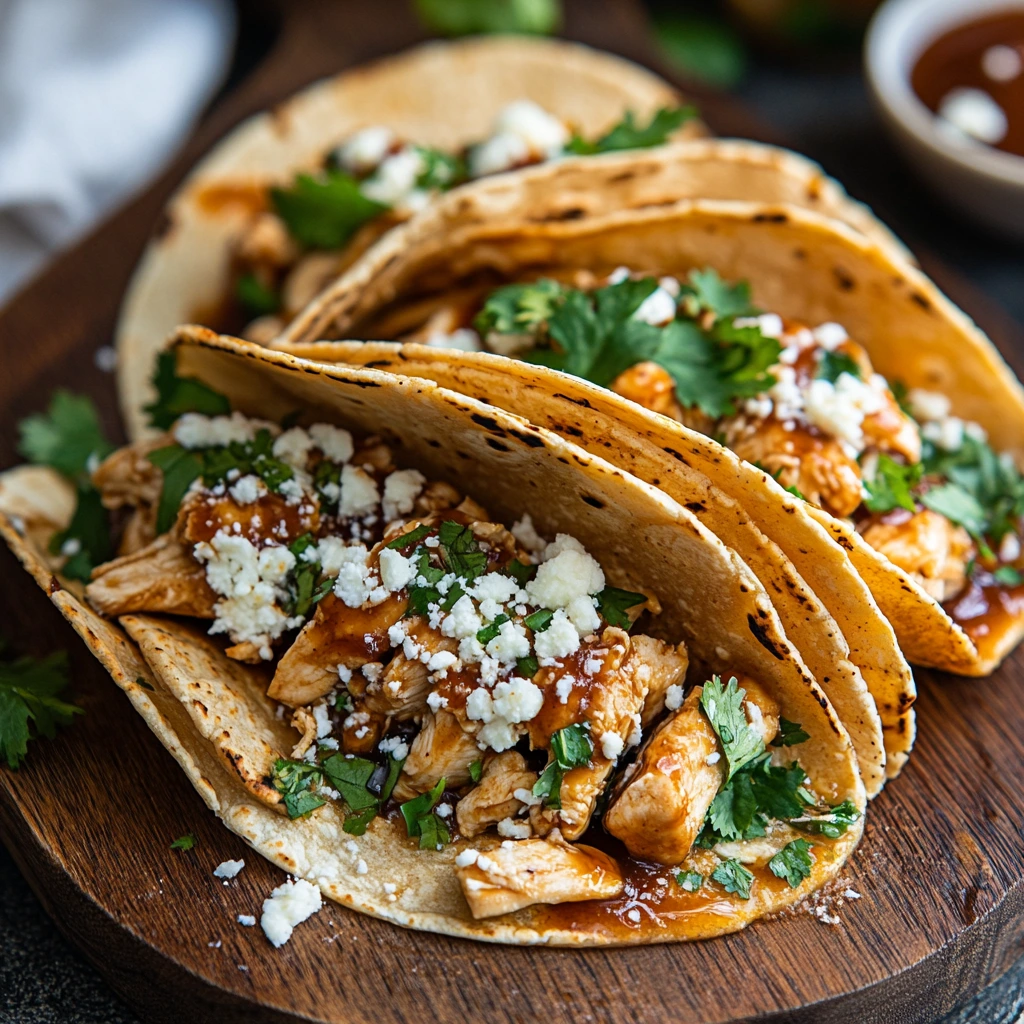In a world where healthy eating meets culinary delight, few dishes manage to strike a balance between flavor, nutrition, and versatility quite like Fresh Vegetable Couscous. This dish, rooted in North African cuisine, has made its way into kitchens around the globe, celebrated for its vibrant colors, fragrant spices, and wholesome ingredients.
Whether you’re seeking a hearty vegetarian main dish, a light side for grilled meats, or a meal-prep option that will last throughout the week, Fresh Vegetable Couscous delivers on all fronts. It’s colorful, satisfying, and simple enough for beginner cooks while still impressive enough for dinner parties.
In this article, we’ll cover everything you need to know about preparing Fresh Vegetable Couscous—from ingredients and cooking instructions to pro tips, serving suggestions, and nutritional benefits. By the end, you’ll be ready to create a dish that brings warmth and joy to any table.
Why Choose Fresh Vegetable Couscous?
-
Nutrient-Rich: Packed with fiber, vitamins, and antioxidants from a variety of vegetables.
-
Quick & Easy: Couscous cooks in just minutes, making it one of the fastest wholesome meals you can prepare.
-
Versatile: Works as a vegetarian main dish, a side, or even a base for grilled proteins.
-
Globally Inspired: Traditional North African flavors blend seamlessly with modern adaptations.
-
Meal-Prep Friendly: Stays fresh in the fridge for several days, perfect for busy weeks.
Ingredients for Fresh Vegetable Couscous
Here’s what you’ll need to prepare a classic bowl of Fresh Vegetable Couscous:
Main Ingredients
-
2 cups couscous (instant or traditional, preferably whole wheat for extra fiber)
-
2 ½ cups vegetable broth (low sodium)
-
2 tablespoons olive oil
-
1 medium onion, finely chopped
-
2 garlic cloves, minced
-
1 medium zucchini, diced
-
1 medium carrot, diced
-
1 red bell pepper, chopped
-
1 yellow bell pepper, chopped
-
1 cup cherry tomatoes, halved
-
1 cup green beans, trimmed and cut into 2-inch pieces
-
1 cup chickpeas (cooked or canned, drained and rinsed)
-
1 teaspoon ground cumin
-
1 teaspoon paprika
-
½ teaspoon ground coriander
-
½ teaspoon turmeric
-
Salt and pepper to taste
Garnishes
-
Fresh parsley or cilantro, chopped
-
Lemon wedges
-
Toasted almonds or pine nuts (optional, for crunch)
Kitchen Tools You’ll Need
-
Medium saucepan with lid
-
Large skillet or sauté pan
-
Sharp knife and cutting board
-
Measuring cups and spoons
-
Wooden spoon or spatula
-
Serving bowl
Step-by-Step Instructions
1: Prepare the Couscous
-
In a medium saucepan, bring the vegetable broth to a boil.
-
Stir in the couscous, a pinch of salt, and 1 tablespoon olive oil.
-
Remove from heat, cover, and let sit for 5 minutes.
-
Fluff with a fork and set aside.
2: Cook the Vegetables
-
Heat the remaining olive oil in a large skillet over medium heat.
-
Add onion and garlic; sauté until fragrant and lightly golden.
-
Stir in carrots and green beans, cooking for 3–4 minutes.
-
Add zucchini and bell peppers; sauté until tender but still vibrant.
-
Toss in cherry tomatoes and chickpeas.
3: Season and Combine
-
Sprinkle cumin, paprika, coriander, turmeric, salt, and pepper over the vegetables.
-
Stir well to coat evenly in spices.
-
Add the cooked couscous to the skillet.
-
Toss everything together until well mixed and heated through.
4: Serve
-
Transfer to a serving bowl.
-
Garnish with fresh parsley, lemon wedges, and optional toasted nuts.
-
Serve warm as a main or side dish.
Helpful Tips for the Perfect Fresh Vegetable Couscous
-
Cut Evenly: Dice vegetables into uniform pieces for even cooking.
-
Don’t Overcook: Keep veggies slightly crisp for better texture.
-
Customize: Add seasonal vegetables such as butternut squash, peas, or spinach.
-
Add Protein: For a fuller meal, pair with grilled chicken, fish, or tofu.
-
Make It Spicy: Add chili flakes or harissa paste for heat.
-
Meal Prep Tip: Store in airtight containers in the fridge for up to 4 days.
Nutritional Benefits of Fresh Vegetable Couscous
One serving (about 1 ½ cups) provides approximately:
-
Calories: 320
-
Protein: 9 g
-
Carbohydrates: 58 g
-
Fiber: 8 g
-
Fat: 7 g
-
Vitamin A: 80% DV
-
Vitamin C: 90% DV
-
Iron: 15% DV
This makes it a nutrient-dense dish that fuels your body with sustained energy, supports digestion, and strengthens immunity.
Serving Suggestions
-
Pair with Moroccan tagine for a traditional experience.
-
Serve alongside grilled salmon or chicken for added protein.
-
Enjoy cold as a couscous salad the next day with an extra drizzle of lemon.
-
Plate beautifully with roasted vegetables for festive occasions.
Variations of Fresh Vegetable Couscous
-
Mediterranean Couscous: Add feta cheese, olives, and sun-dried tomatoes.
-
Spicy Couscous: Stir in harissa paste or red pepper flakes.
-
Sweet & Savory Couscous: Include dried apricots, raisins, or pomegranate seeds.
-
Gluten-Free Couscous: Replace with quinoa or millet.
Why Fresh Vegetable Couscous Is the Perfect Dish for Any Occasion
From weeknight dinners to holiday feasts, this recipe checks all the boxes: it’s quick, versatile, customizable, and packed with nutrients. Its colorful appearance makes it a showstopper, while its comforting flavor ensures it appeals to everyone at the table.
Conclusion
Fresh Vegetable Couscous is more than just a recipe—it’s a celebration of fresh produce, fragrant spices, and wholesome nourishment. Easy to prepare, endlessly adaptable, and irresistibly delicious, it deserves a place in your cooking repertoire.

